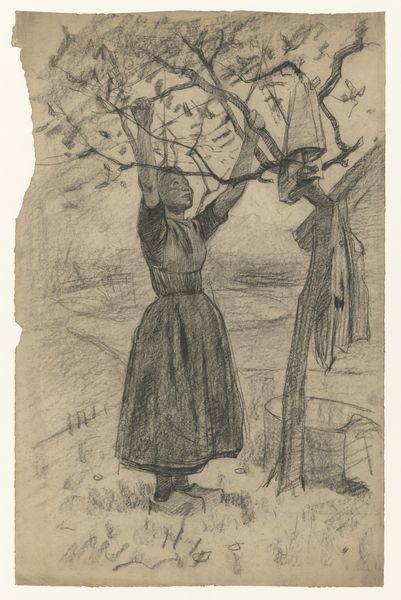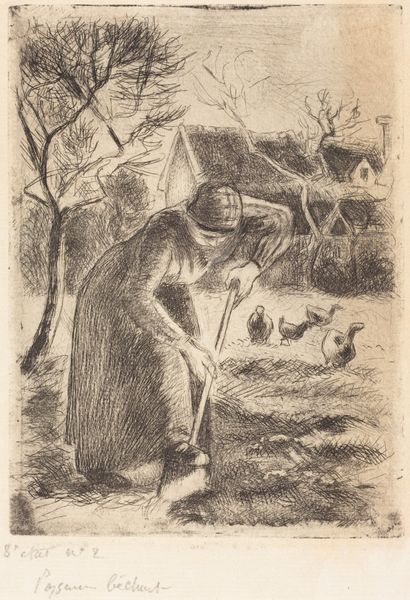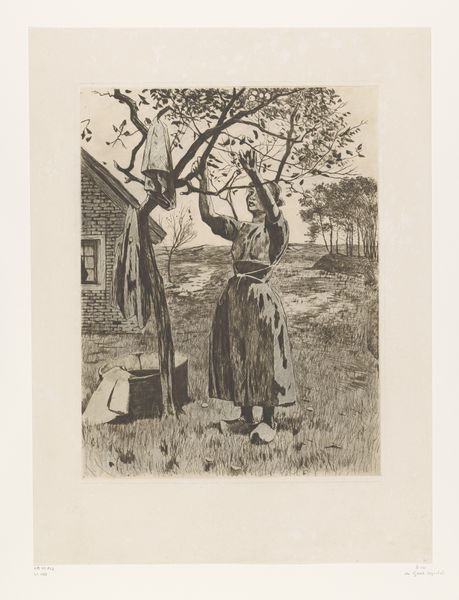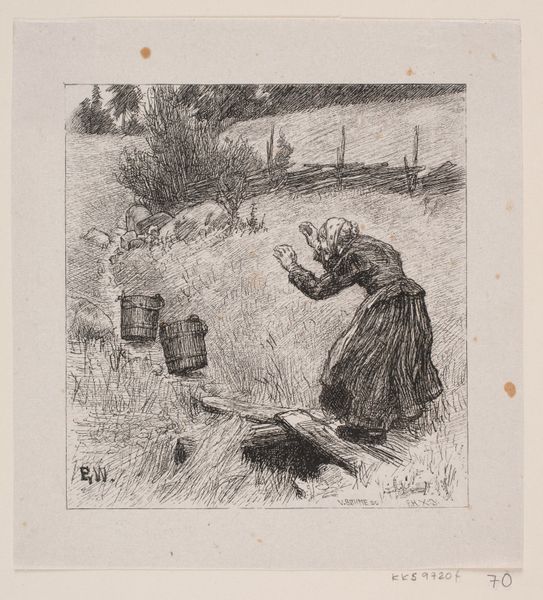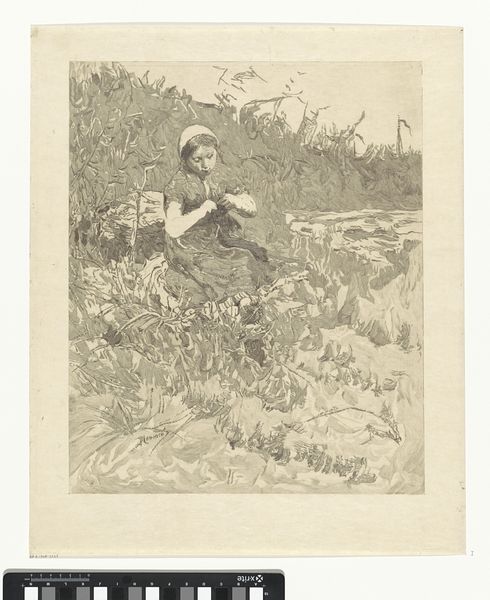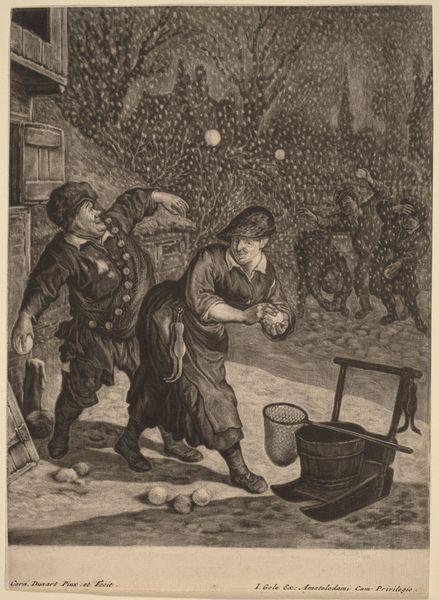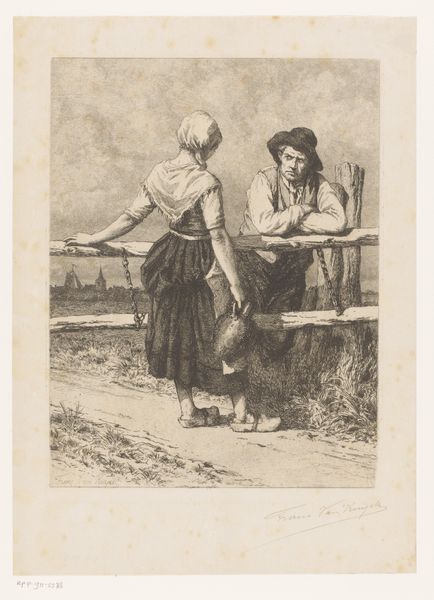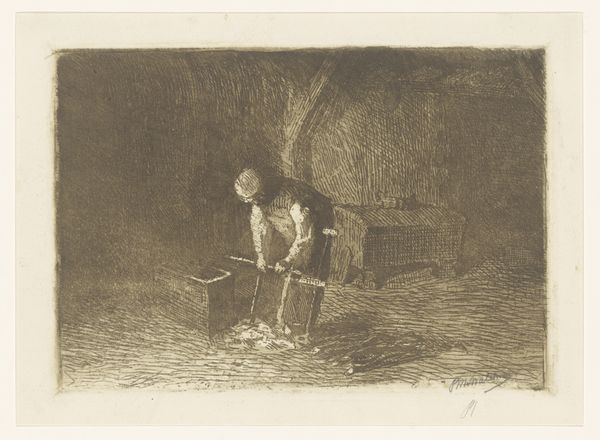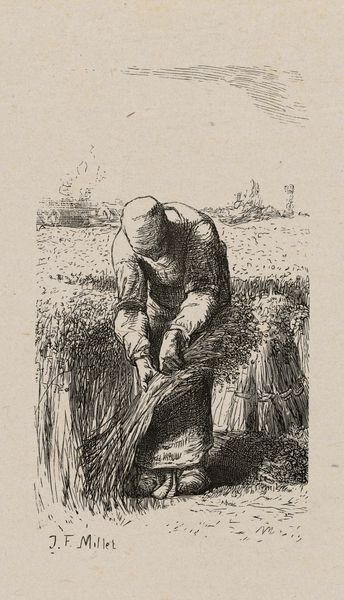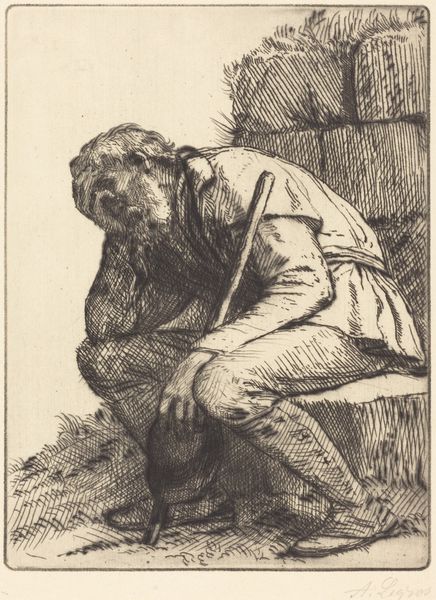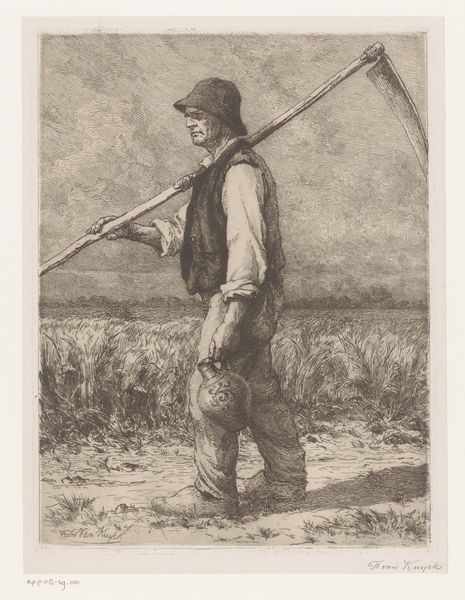
Dimensions: height 494 mm, width 314 mm
Copyright: Rijks Museum: Open Domain
Curator: Willem Witsen created this pencil drawing, titled "Vrouw spoelt de was in een emmer, voor een boerderij"—or, "Woman rinsing laundry in a bucket, in front of a farm"—sometime between 1870 and 1923. Editor: My first impression is how intimate and yet monumental the scene feels. The composition is so simple, almost stark, but the woman seems deeply connected to both her labor and the landscape around her. Curator: Indeed. The act of laundry here isn't just a mundane task, but rather a timeless ritual. Consider the compositional echoes—the circularity of the bucket mirrors the bending of the woman’s form, as well as the crown of the tree behind her. It gives a feeling of a closed, safe, but maybe also cyclical and unchanging world. Editor: Absolutely. And you see how Witsen uses the pencil? Not for perfect rendering, but almost like a rough form of impressionism using dry media. The way he captures the texture of her dress, the wooden shoes, even the pail – you can almost feel the damp cloth. The physicality of the labor really stands out to me. It's honest, there is no embellishment or glorification here, it’s the real thing. Curator: Witsen, coming from a privileged background, frequently depicted working-class subjects. How do you see this choice affecting our interpretation? I wonder what unconscious symbols or meanings he might attribute to it? Is this his attempt to align with the symbol of the archetypal Mother Earth? Editor: Interesting point! Considering the material constraints of labor in that era is critical. Washing by hand, with rough materials… This wasn't merely "picturesque"; it defined the rhythm of life. This pencil sketch helps us understand the often invisible, material labor upon which the rest of society was built. It makes one consider the means of laundry production in relation to all of modern technology. Curator: Agreed, viewing the drawing through a social context opens up rich and nuanced perspectives. I had only thought about the iconographic aspects but I must consider this artwork anew, from this labor perspective you opened up. Editor: Exactly, and it encourages a dialogue that considers both labor, means of production, and broader symbolic value in Dutch art.
Comments
No comments
Be the first to comment and join the conversation on the ultimate creative platform.
